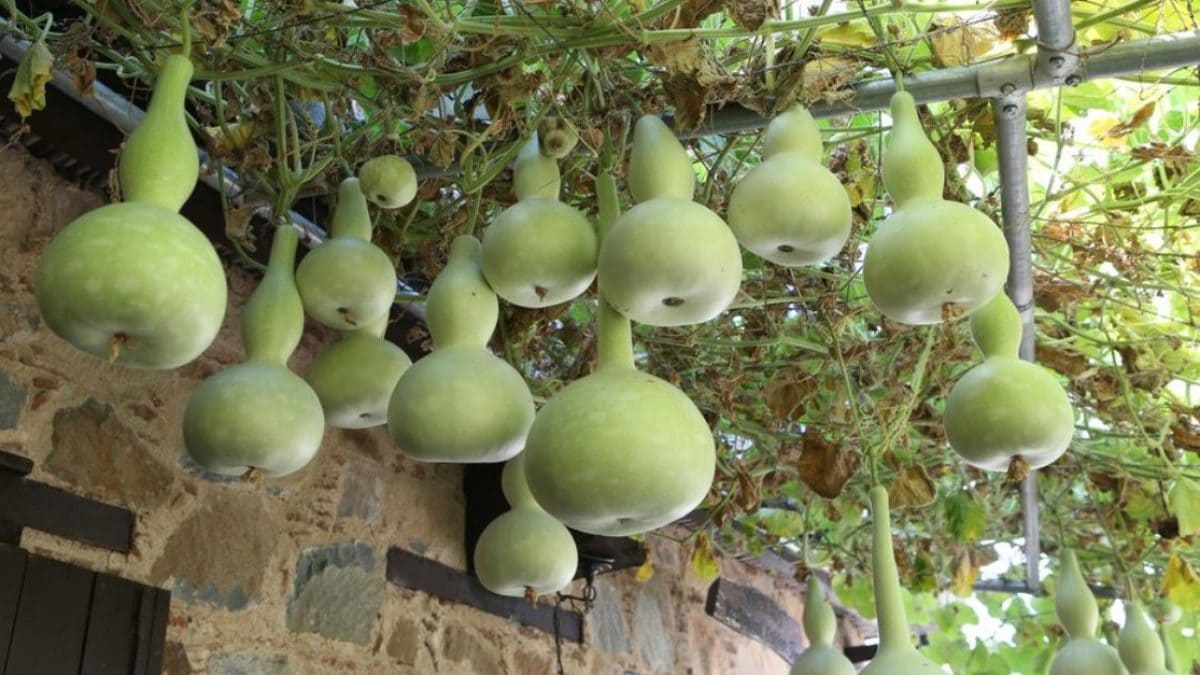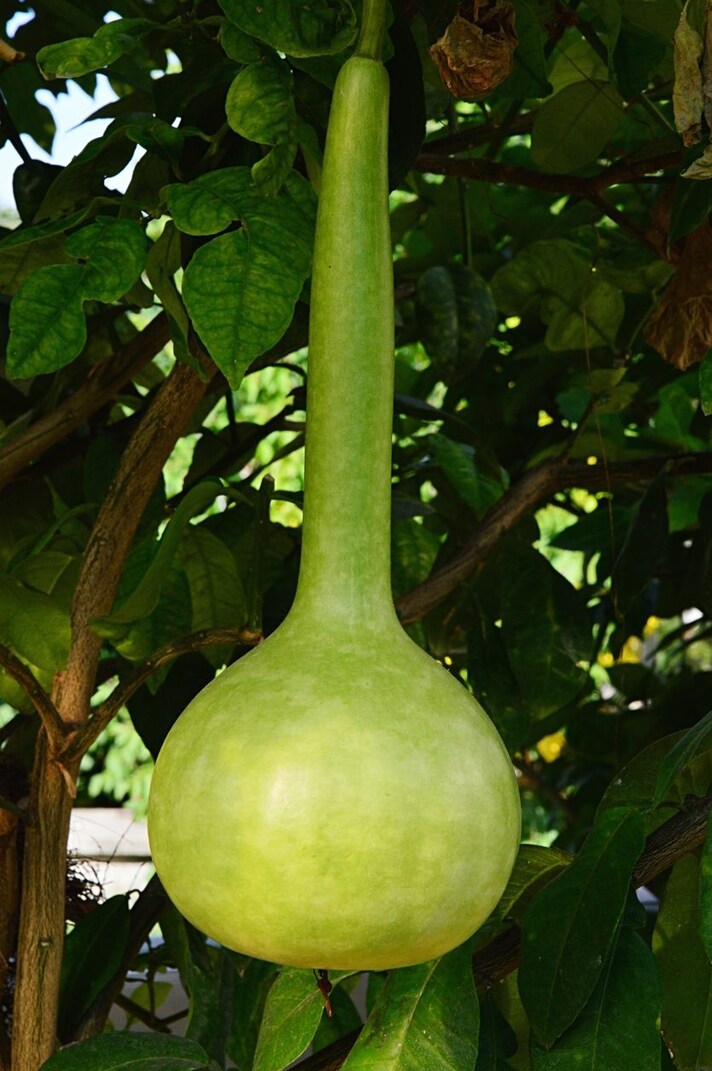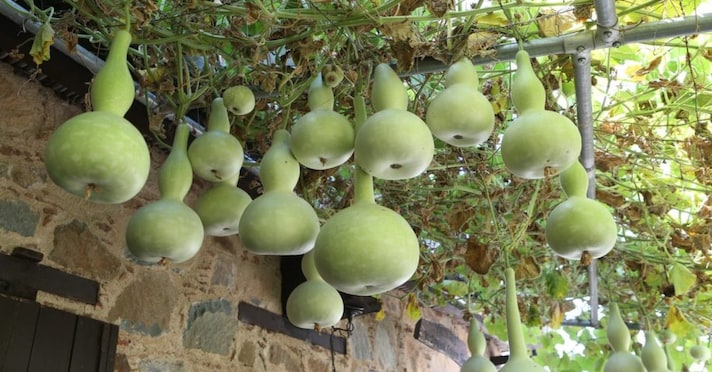
Tasty, sweet and very versatile: we are talking about pumpkin, one of the most loved winter vegetables. Pumpkins, however, are not all the same: there are many varieties, some very famous and others less known. Many do not know that some pumpkins are sown in spring and harvested in summer, starting in August: this is the case of the calabash pumpkin, better known as the bottle pumpkin or wine pumpkin.
It is a type of pumpkin that is usually best known for its ornamental beauty: once dried, in fact, it is used for many creative works, from musical instruments to water bottles, so much so that it is also nicknamed "wine pumpkin". What you don't know is that the calabash pumpkin is also edible, in fact it is very good: how to cook it and what are its characteristics? Here is everything you need to know.
What is Bottle Gourd?
The scientific name of the bottle gourd or calabash gourd is Lagenaria siceraria, an annual herbaceous climbing plant of African origin that is now cultivated throughout the world, especially in tropical or subtropical environments; it is no coincidence that it is widely used as an ingredient in Indian, South Asian and South American cuisines. The fruit of the same name of this plant is our pumpkin, a very versatile product that has historically been used as a food, as an ornament and as a remedy in natural medicine.

From a nutritional point of view, the bottle squash is very delicate, it has a sweet flavor that resembles the zucchini and in fact, some types of this squash do not have the widespread figure eight shape but a narrow and elongated shape that resembles a zucchini. Once dried, the bottle squash has always been used as an ornament: in its lands of origin it is widely used to produce utensils, containers, pipes, lamps and musical instruments. It is often also processed to become a container for liquids of various types, from water to alcoholic beverages, and it is precisely from this use that the nickname "bottle" squash was born.
Bottle Gourd's Properties and Characteristics
In Italy, bottle gourd is mainly used within specific cultural communities, but we should learn to include it more in our diet because it has a truly interesting nutritional profile, very useful for digestion, weight control, cases of weakness, exhaustion and dehydration.
Calabash squash contains a rich variety of mineral salts including potassium, zinc, manganese and magnesium and has a good presence of vitamin C (which makes it a moderately antioxidant food) and B vitamins. It is a food that naturally contains folic acid, which is why in many countries it is recommended to pregnant women to increase their intake of this vitamin which is essential for the production of new cells.

Excellent for fighting bad digestion and constipation problems, the bottle gourd is also highly recommended in low-calorie diets: in fact, it boasts a minimal amount of calories (100 g of pumpkin contain only 14 kcal) and also has a good satiating power. The only precaution to take is not to eat the pumpkin when it is too ripe, a state that you can recognize from the flavor that becomes bitter and unpleasant: in this case the calabash develops a concentration of cucurbitacins, substances that can be harmful to the human organism.
Wine Gourd: How to Use It In The Kitchen
From a culinary point of view, the bottle gourd allows for different types of uses. When the vegetable is particularly young, it has a very sweet flavor and a very juicy pulp, which is why it is mainly used boiled or sautéed in a pan as a side dish, perhaps seasoned with a drizzle of extra virgin olive oil and a mix of pepper or crumbled pumpkin seeds, as well as a little balsamic vinegar.
Young calabash squash can also be fried if you want a more delicious accompaniment, while when it is more mature the pulp becomes creamier, a characteristic that makes it ideal for baking and blending, becoming an ingredient in cream soups, soups and stews. Mature bottle squash is also excellent for being hollowed out and stuffed, and it also lends itself to particular recipes such as curry, perhaps combined with tomato and served with chicken and white rice, or as chutney.
;Resize,width=767;)
